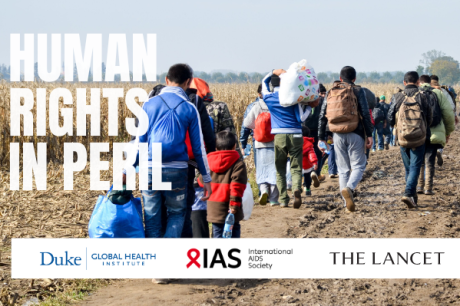
Michelle Roberts is currently doing fieldwork in Buenos Aires, Argentina, where she is always asked, "¿Cómo andas?"
Published June 28, 2016, last updated on October 12, 2017 under Voices of DGHI
By Michelle Roberts, MSc-GH candidate
This summer, like most of my classmates and friends at DGHI, I am spending ten weeks in the field to complete data collection for my MSc-GH thesis. Specifically, I am in Buenos Aires, Argentina, working on a qualitative study at Hospital Italiano de Buenos Aires and Hospital Universitario Austral exploring patient and caregiver experience after an acute neurological event through observation and interviews.
During my first three weeks I have already learned a great deal. As they would say here, un montón.
One thing I am certainly learning a lot about is Argentinean slang. I was not new to Spanish before, but I am still learning a new slang word or phrase everyday.
One of the first phrases I heard that puzzled me is ¿Cómo andas?, literally translating as “How do you walk?” The first time I heard someone use this phrase, I thought I had misheard—it happens to me all the time, I assure you. But, it kept happening—the residents and doctors in Hospital Italiano’s ICU, my host mom, the superintendent of my building, taxi drivers—everyone I speak to uses this phrase. And, after hearing it more than that first time it wasn’t hard to figure out what it meant. ¿Cómo andas? is a greeting meaning, “How are you?” or “What’s up?”
The seeming disconnect between the literal translation and the actual meaning is actually not so pronounced. From this commonplace phrase, I began to think about how the way we walk, move or, in some way get around places shapes our experience. Maybe on your way to work you step in a puddle. Maybe you miss the subway. Maybe you just got lost. Maybe you make a friend. Regardless, transportation is an important part of life.
With that in mind, I became curious as to what my friends’ commutes to work look like this summer. To me, it feels like a small way to share in a piece of someone’s daily experience, particularly a part of that experience that someone might not typically be asked to share.
Below, are some photos of our commutes to work. This is how we walk. How do you walk?

Buenos Aires, Argentina: Every morning I take the subway—or Subte, short for subterráneo—
and join the mad dash of commuters cramming into cars. (Michelle Roberts)

Eldoret, Kenya: The walk to the Duke Office is an easy one—about ten minutes mostly on a red dirt road.
We are greeted along the way with smiling faces of guards who always wish us well with a “morning to you”
or “Hello, mzungu, how are you?” (Courtesy of Matt Boyce; Daniel Evans, Taylor Lindsay, Leah Watson,
and Alex Whitcomb are also in Eldoret, Kenya.)

Geneva, Switzerland: Taking the tram to the Palais des Nations
(Courtesy of Hiba Fatima, interning this summer at the World Health Organization)

Between Kampala and Mbarara, Uganda: Twice a week, I make the five hour bus ride
between Kampala and Mbarara, Uganda. Live chicken on board! (Courtesy of Ben Kuo)

Chitwan, Nepal: In Chitwan for a week-long qualitative research training program
to kick off our project on mental health among Nepali adolescents. Too bad we couldn’t
use these guys for our pilot interviews! (Courtesy of Martha Berg)

Lima, Peru: In Lima, the most common form of transportation is the bus.
A 30-minute bus ride across the city costs one Peruvian soles or about 30 cents. (Courtesy of Denali Dahl)

Moshi, Tanzania: Walking to work in Moshi, Tanzania, always hoping Mt. Kilimanjaro
will peek out, but there ususally seems to be a cloud in the way in the morning.
(Courtesy of Happy Ghosh; Deena El-Gabri and Olivia Fletcher are also in Moshi, Tanzania)

Belo Horizonte, Brazil: Entering the Federal University of Minas Gerais
in Belo Horizonte, Brazil (Courtesy of Adrian Lein)


